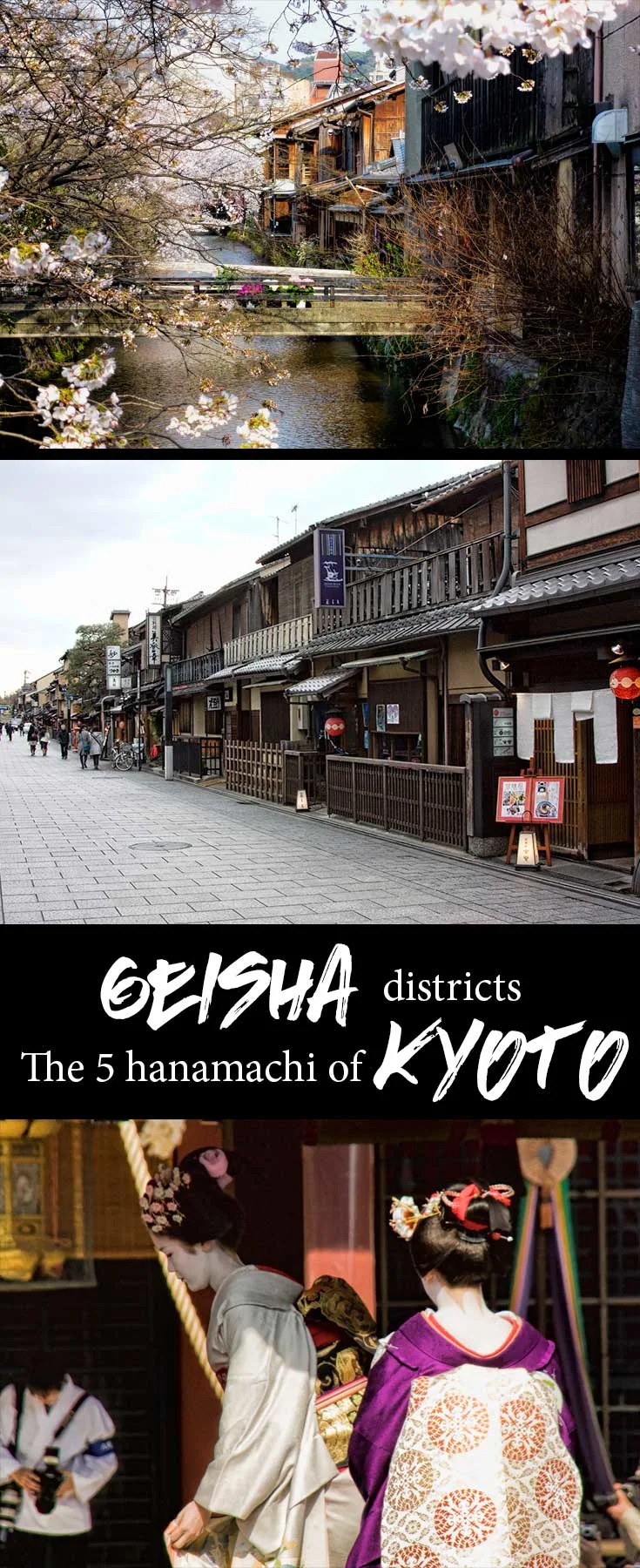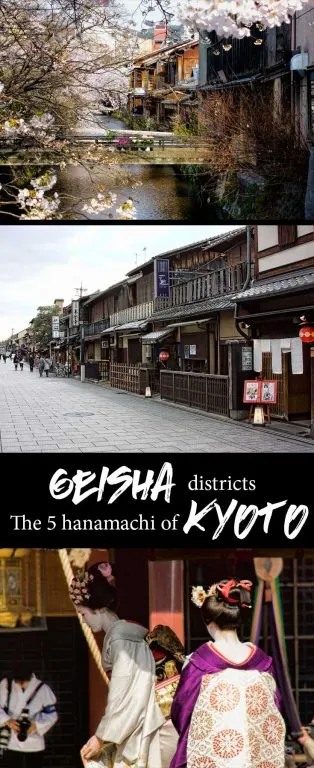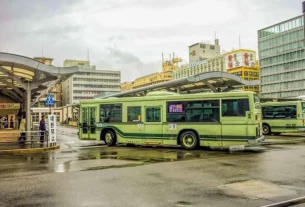Planning to see Geisha in Kyoto? Head into the areas where they live and entertain. These geisha districts are known as hanamachi and there are 5 in Kyoto.

The city of Kyoto is a dream for anyone with an interest in Japanese history. It’s a fantastic city to wander around, it’s flat, there is something to look at every few metres and it’s overflowing with opportunities to learn more about Japanese culture. Add to that that the abundance of good food to eat along the way and there’s something for everyone.
For me, nothing could surpass my first walk through the historic hanamachi, the geisha communities of this fascinating city. It was like a storybook had come alive right in front of my eyes.
Hanamachi translates to ‘flower district’ and is the area where the geisha live, entertain and perform. In Kyoto, the global term of geisha (performing artist) isn’t used as a title but rather geiko (woman of the arts) when they are qualified and maiko (child of the arts) for an apprentice geiko who will normally be under the age of 20.
Four of the geisha districts of Kyoto are located in close proximity and centred around Shijo Dori, a central shopping street in Kyoto. The 5th Hanamachi is further away in northern Kyoto. It’s closer to the famous temple attractions of Kinkaku-Ji and Ryoan-Ji.
Gion Kobu and Gion Hagashi
Gion is the largest and most famous of the geisha districts. It is now recognised as two distinct communities, the original Gion Kobu and the smaller Gion Hagashi. The theatre of Gion Kobu is the Gion Kaburenjo Theatre, this is where we watched the maiko and geiko perform in the Miyako Odori Spring Dance. The geisha of Gion Hagashi have their own dance hall and perform at the Gion Kaikan theatre, their annual dance is called the Gion Odori and takes place in early November.
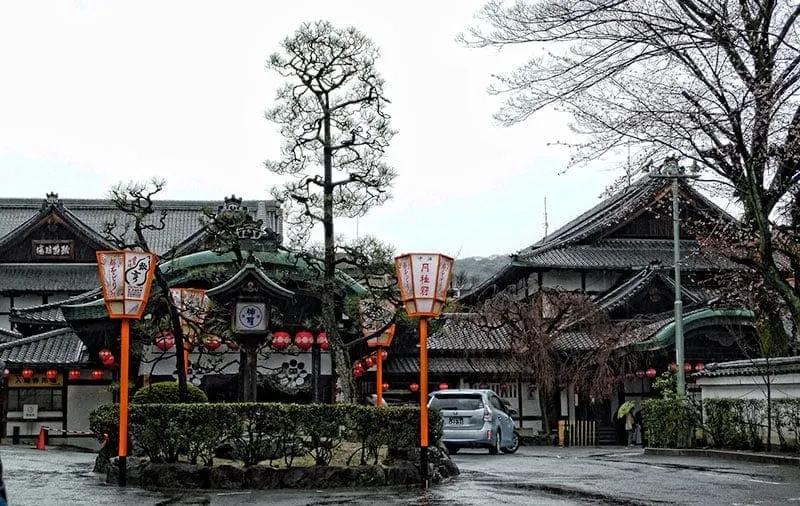
The beautiful Shirakawa canal is in the Gion hanamachi, if you were a fan of the novel ‘Memoirs of a Geisha’ you might recall references to this area. It’s particularly beautiful during the cherry blossoms when we were there and on the 8th of November, you have the chance to spot a local geisha or two during Kanikakuni Sai in memory of the poet Yoshii Isamu who wrote about his love for Gion.
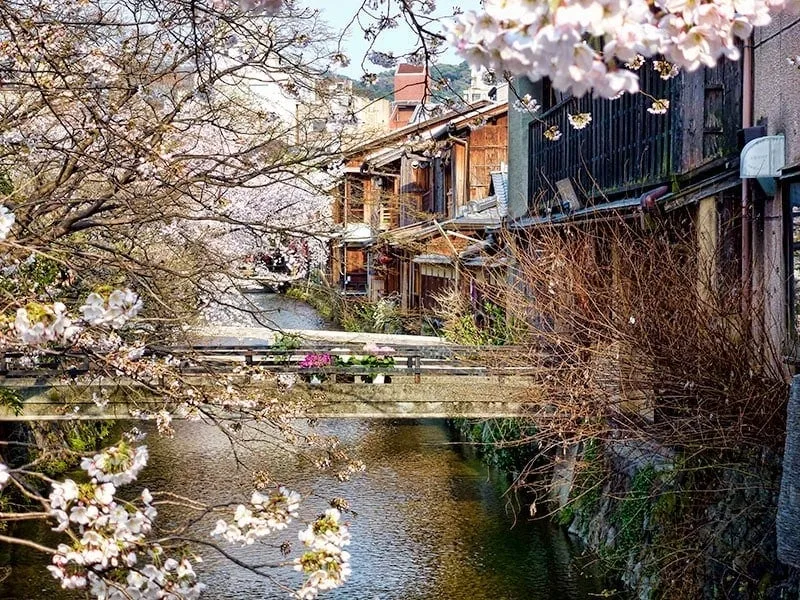
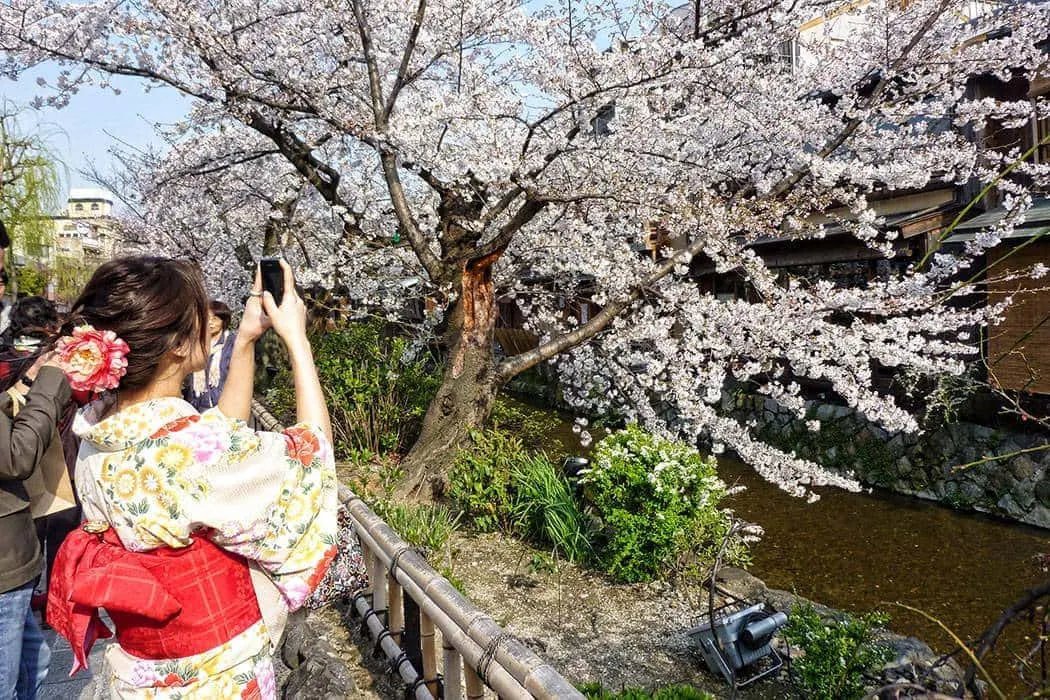
Gion appears the largest and most prestigious of the hanamachi. It’s clearly had more recent renovations while retaining its traditional character and has embraced the tourism market if not into its inner operations and entertainment then at least into its district and public performances.
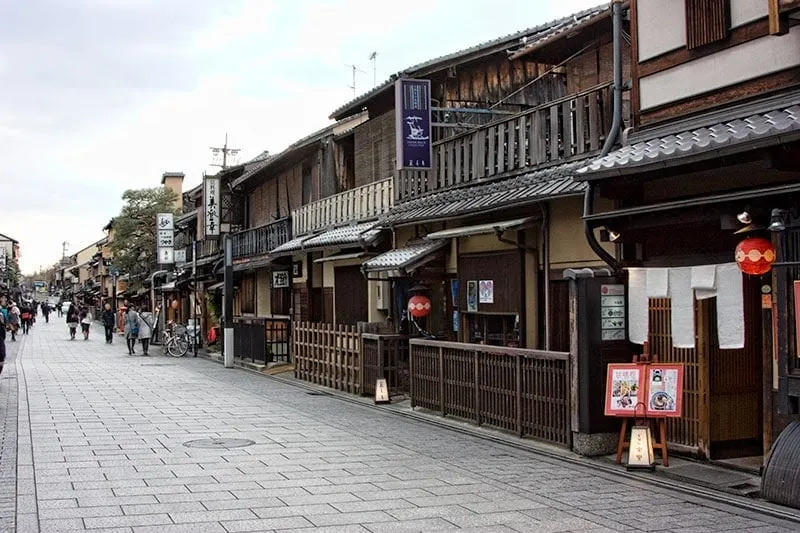
Pontocho
Pontocho is ranked second among the geisha districts and has existed in that area since the 16th century. Pontocho is mostly Pontocho Alley which runs the distance between Shijo Dori and Sanjo Dori. The eastern side of the alley backs onto the Kamogawa River with several of the establishments having outdoor seating.
The performance for this hanamachi takes place in Kaburenjo theatre which is located at the Sanjo end. The main performance called the Kamogawa Odori has been performed since the 1870s and takes place in May.
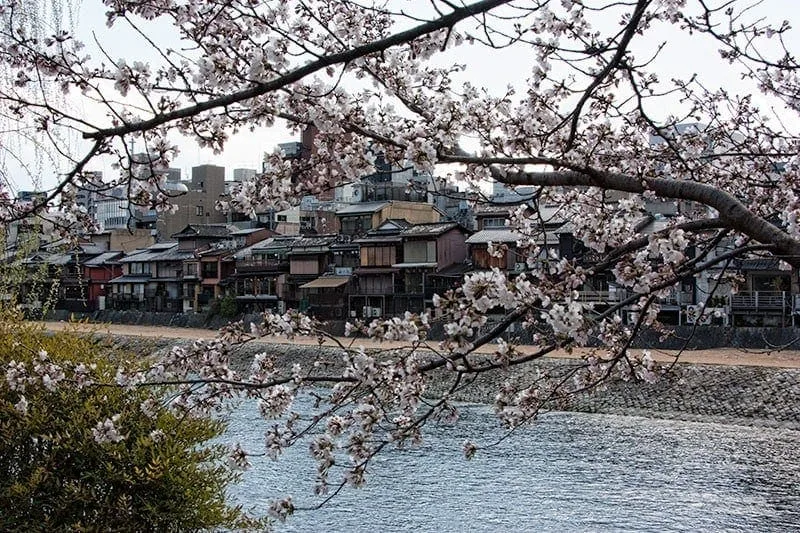
I have a bit of a soft spot for Pontocho having had the chance to see two of their very beautiful maiko perform in Yasaka shrine at a public Setsubun festival.
Migagawa-cho
The Miyagawacho geiko and maiko perform their Kyo Odori dances in the first two weeks of April at the Miyagawacho Kaburenjo Theatre. The hanamachi is located in the streets around it. The maiko (apprentice geisha) also make their way to the theatre each morning for their music and dance training.
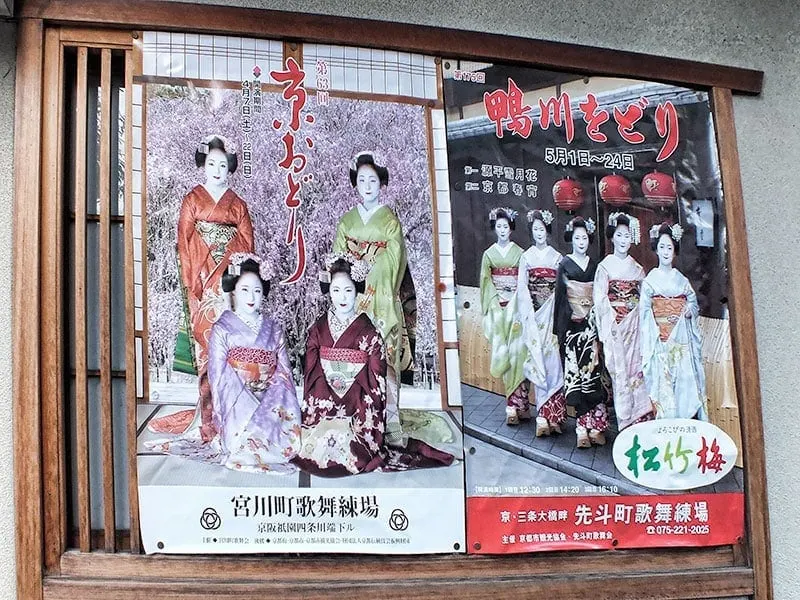
Migagawa-cho has a sizable entertainment district along the banks of the Kamo River. An indicator of a hanamachi area, although not totally reliable as they are sometimes used as decoration, is the display of round red lanterns outside the establishments and houses. You will be able to see it on several of the street views on this page.
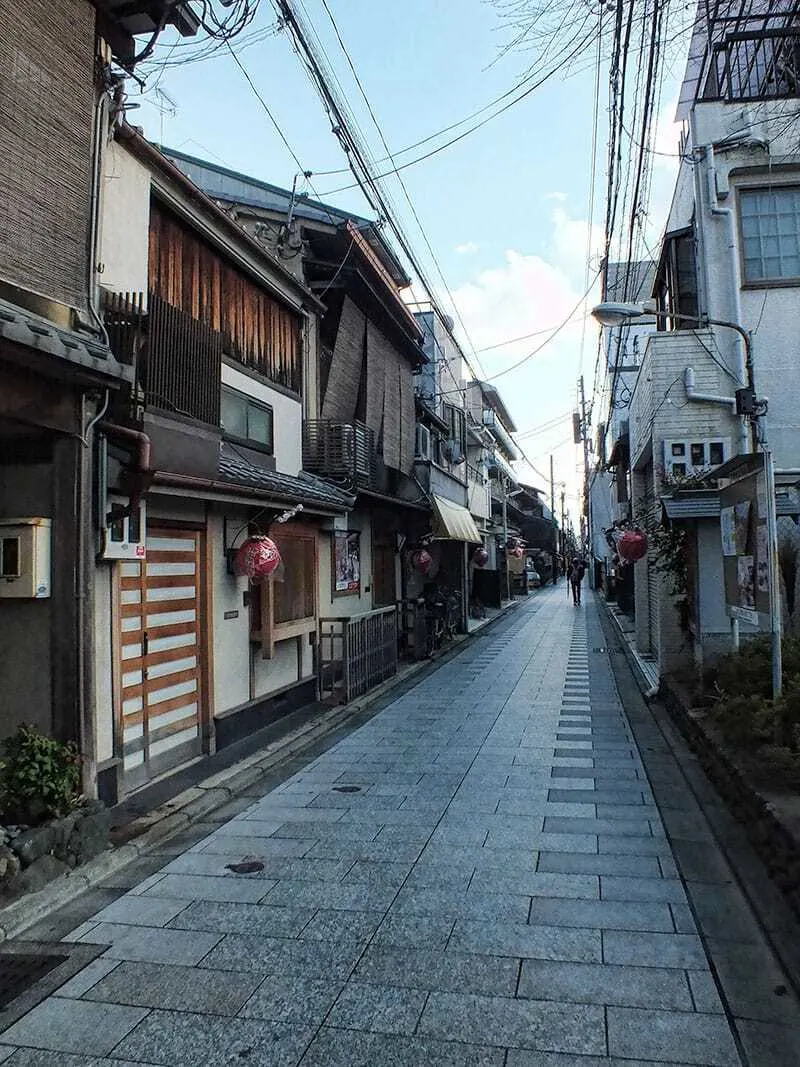
Kamishichiken
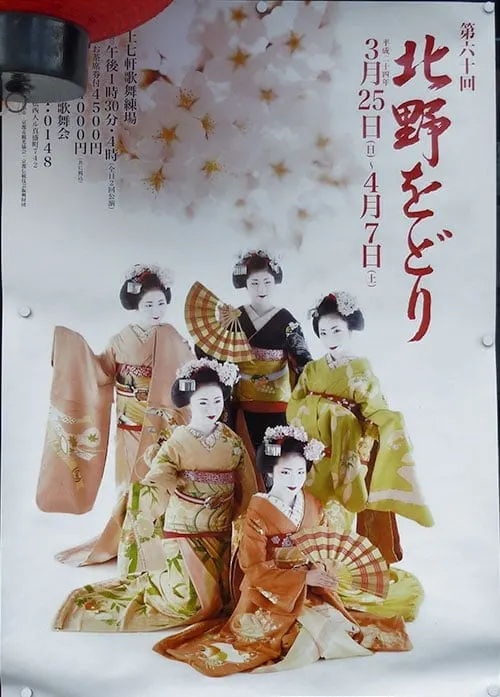
The fifth geisha district isn’t grouped with the others. It’s located in northern Kyoto closer to the famous temples of Ryoan-ji, Kinkaku-ji and their local shrine, Kitano Tenmangu.
It’s the oldest of the Kyoto hanamachi districts with its original 7 tea houses being built from the materials left over from the rebuild of the Kitano Shrine during the Muromachi era between 1333-1573. Today around 25 geikos and maiko remain in the district working in the 12 operational tea houses.
There are a couple of opportunities during the year for the public to see the geisha of Kamishichiken.
On the 3rd of February at 1.30 pm, there is an event to celebrate Setsubun in the Kagura-den hall at Kitano Tenmangu Shrine. As part of this festival, the geisha will perform dances and participate in the scattering of lucky beans.
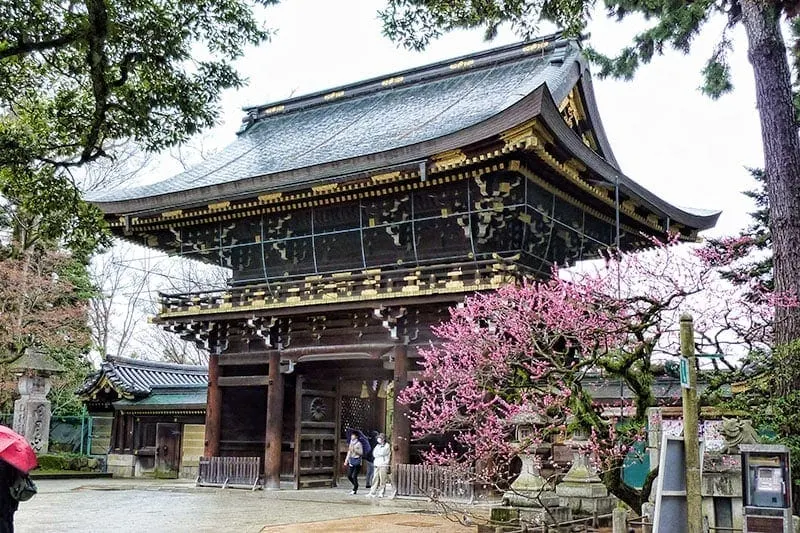
If you’re lucky enough to be in town on the 25th of February and love matcha as I do then you need to make your way to the shrine for Baikasai, the plum blossom festival where the local geiko and maiko perform an outdoor tea service with matcha and wagashi. Then there is the Kitano Odori, the dance performance each year that takes place in their local theatre in late March and early April.
The hanamachi is located in the Nishijin area of Kyoto known for centuries for its traditional handwoven textiles. You might want to see the Nishijin textile centre and kimono parade while you’re out on this side of the city.
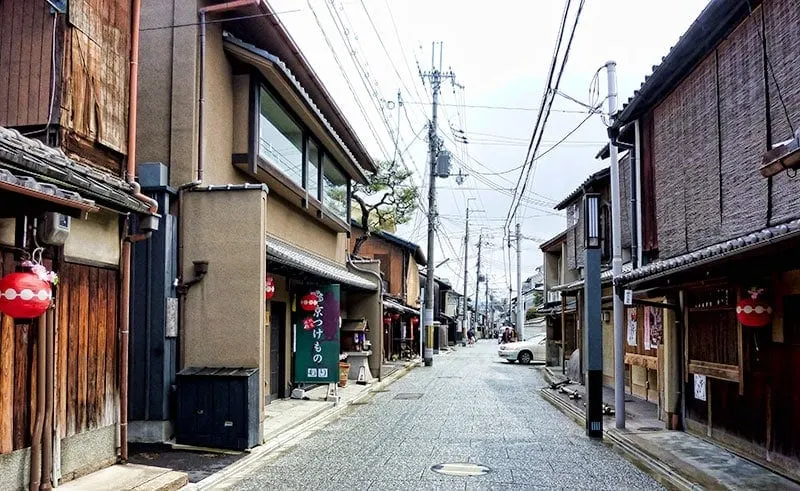
Have you explored the geisha districts of Kyoto? Or be lucky enough to see the Geiko and Maiko on their evening rounds or at an event? Please add your own experiences in the comments below and if this post has been useful please consider sharing it on social media. Thank you!
If you found this article useful please consider saving it to Pinterest. It makes it easy for you to find it again, it helps us, and it helps other travellers to find the information they are looking for.
